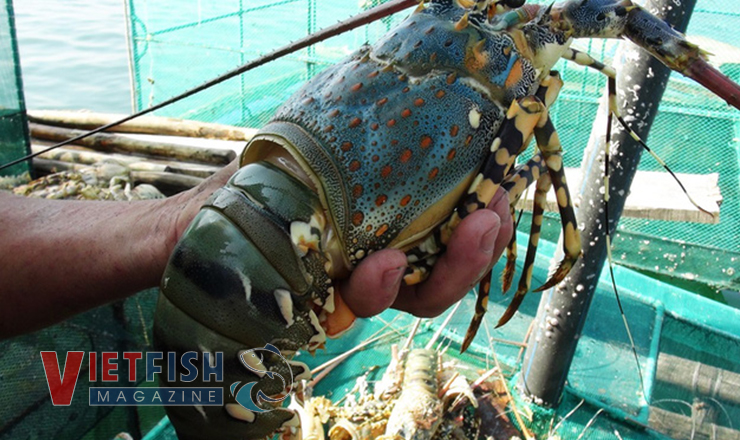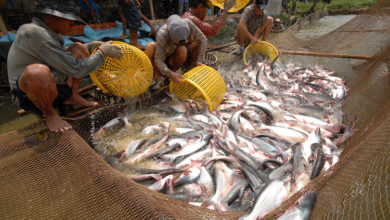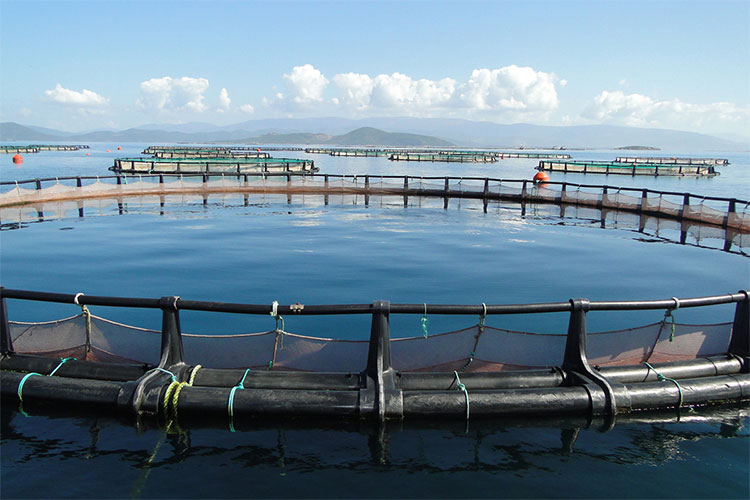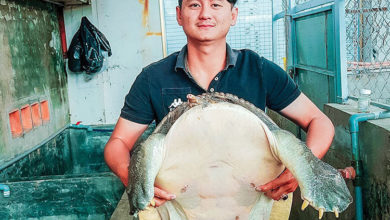Warning of pollution and toxic algae that cause death to lobsters in Xuân Đài bay
Center for Monitoring aquaculture environment and diseases in Centra (MEDCen) of Research Institute for Aquaculture No.3 has given a warning of organic pollution and algae development causing death to lobsters in Xuân Đài of Sông Cầu town, Phú Yên province.
On March, 26 and 27, sea water around lobster area of Xuân Đài bay appeared to turn into red, mainly in Phước Lý (Xuân Yên ward), Phú Mỹ, Trung Trinh (of Xuân Phương comune, Sông Cầu town).
MEDCen came to take samples in those areas with six samples of water, three samples of deposit in Phú Mỹ, Phước Lý and Mỹ Thành and five samples from infected lobsters.
Survey and analysis results shows some failure in criteria in water, particularly level of of dissolved oxygen (DO) in Phước Lý farming area is 3.2 – 3.42 mg/l, in Phú Mỹ 4.46 – 4.62 mg/l that is lower than regulations in QCVN 10-MT: 2015/BTNMT applied on aquaculture and aquatic species conservation (DO at least 5 mg/l).
NH3 level exceeds from 1.5 to 2.8 times more than allowed level in Phú Mỹ and Phước Lý. Vibrio density in surveyed positions exceeds the threshold (ranges from 1,1×103 – 2,5×103 cfu/ml), leaving high risks of infection. Besides, they discover algae living in the water at high density, particularly Prorocentrrum sp from 2.800 to 42.800 tb/l, Peridinium sp from 25.000 to 46.000 tb/l, Noctiluca sp from 78.000 to 132.000 tb/l at positions where samples are taken for test.
Deposit in sample-taken-areas appeared to turn into black, smell (like rotten eggs). PH in deposit ranges from 6.1 to 6.3 with the lowest level recorded in Phước Lý (pH=6.1) followed by Phú Mỹ (pH=6.2) and Mỹ Thành (pH=6.3). Deposit in Phú Mỹ and Phước Lý contains high level of organic substances, between 5.18 and 5.23% (with the lowest level recoreded in Mỹ Thành, 3.82%).
Like organic substances, sulfua in deposit of Phước Lý and Phú Mỹ stay at high level, between 11.58 and 12.53 mg/kg. Vibrio density in deposit in all areas are higher than water environment, ranging from 2.2×103 to 4.5×103 cfu/g.
As compared to the survey carried out late February 2019 as schedule, pH in deposit of these areas appears to reduce while sulfue and organic substances increase. Deposit that contains over 3% organic substances will decrease the abundance and biomass of species at the bottom level, causing bad impact to the environment.
As for five infected samples, tested results showed one that infected Valginolyticus.
VFM






